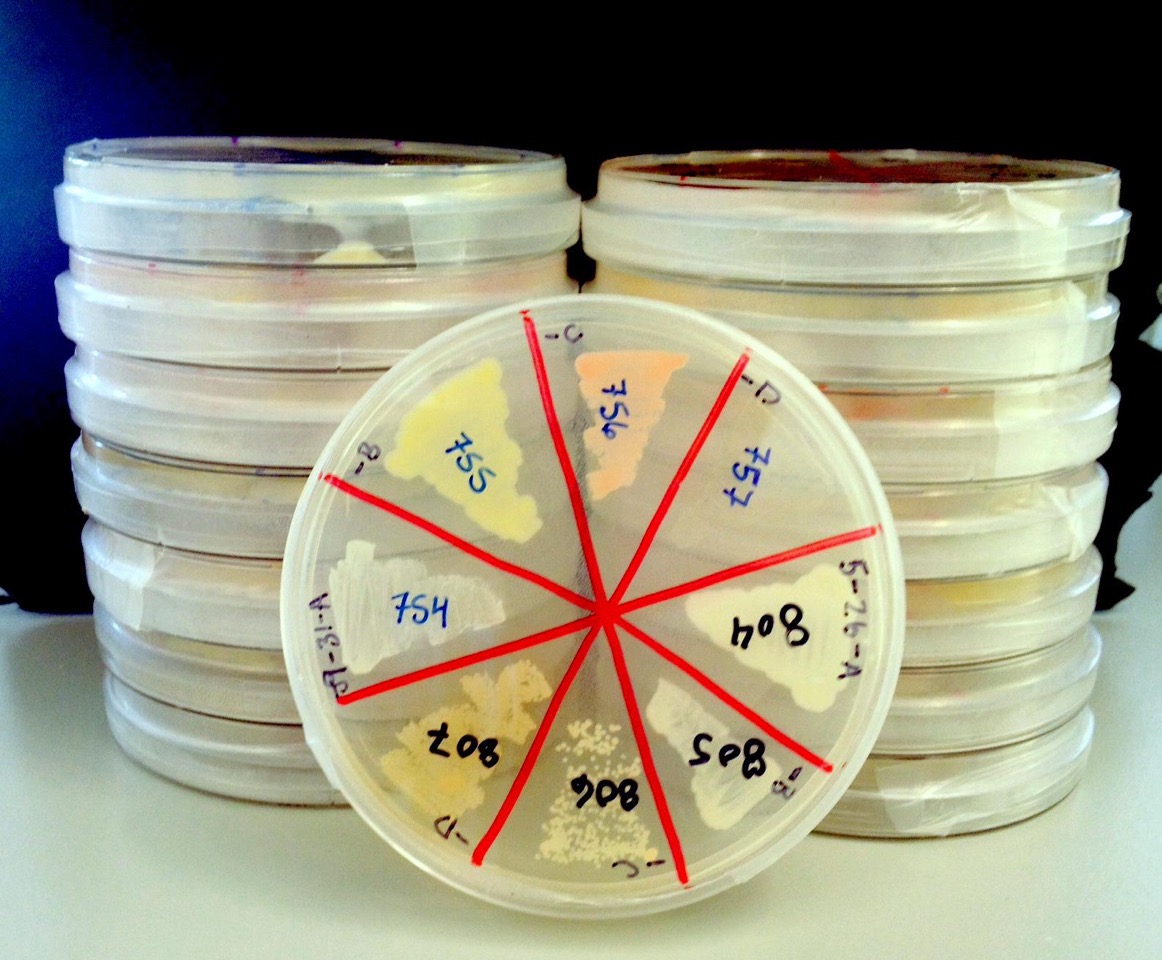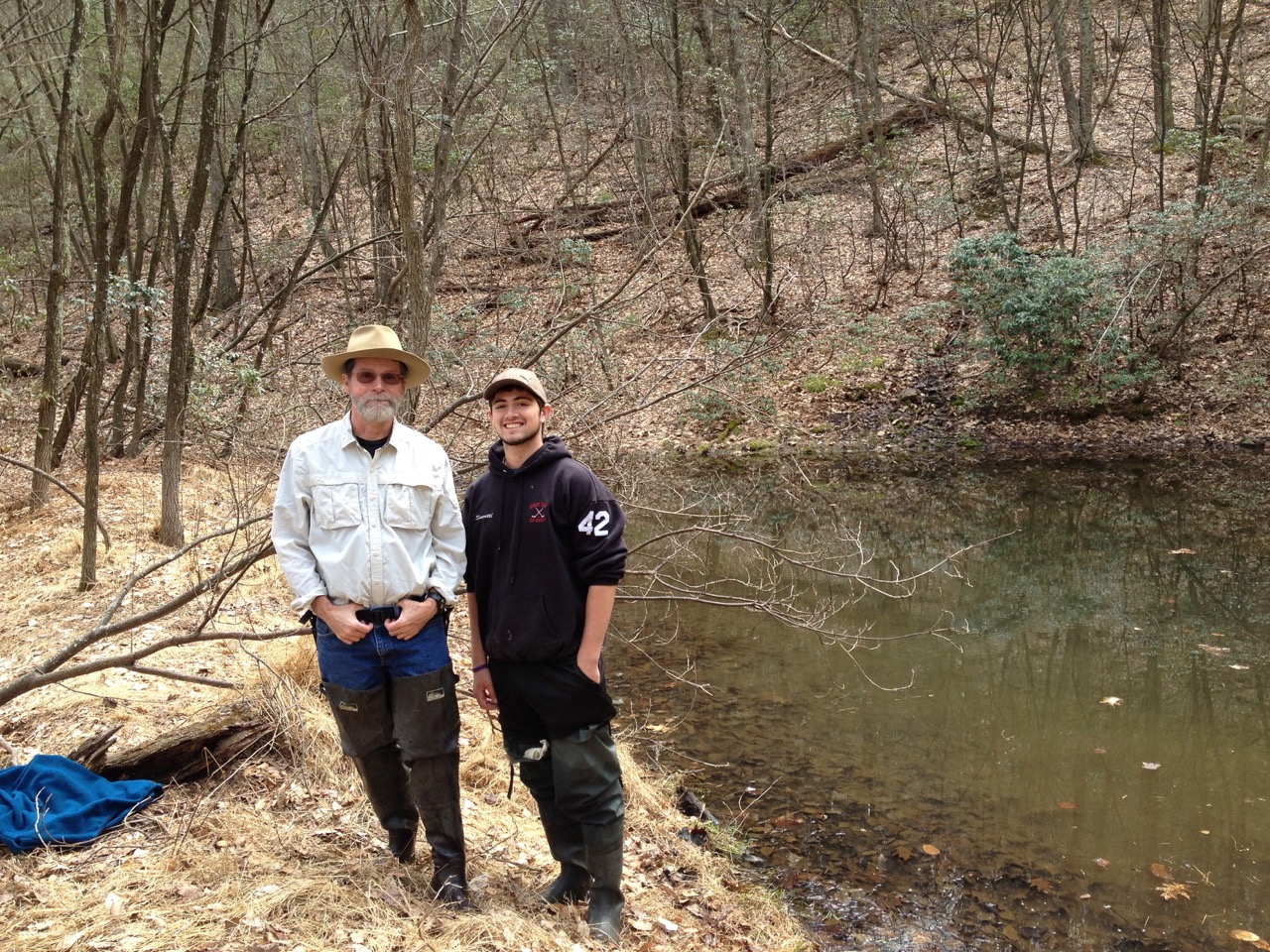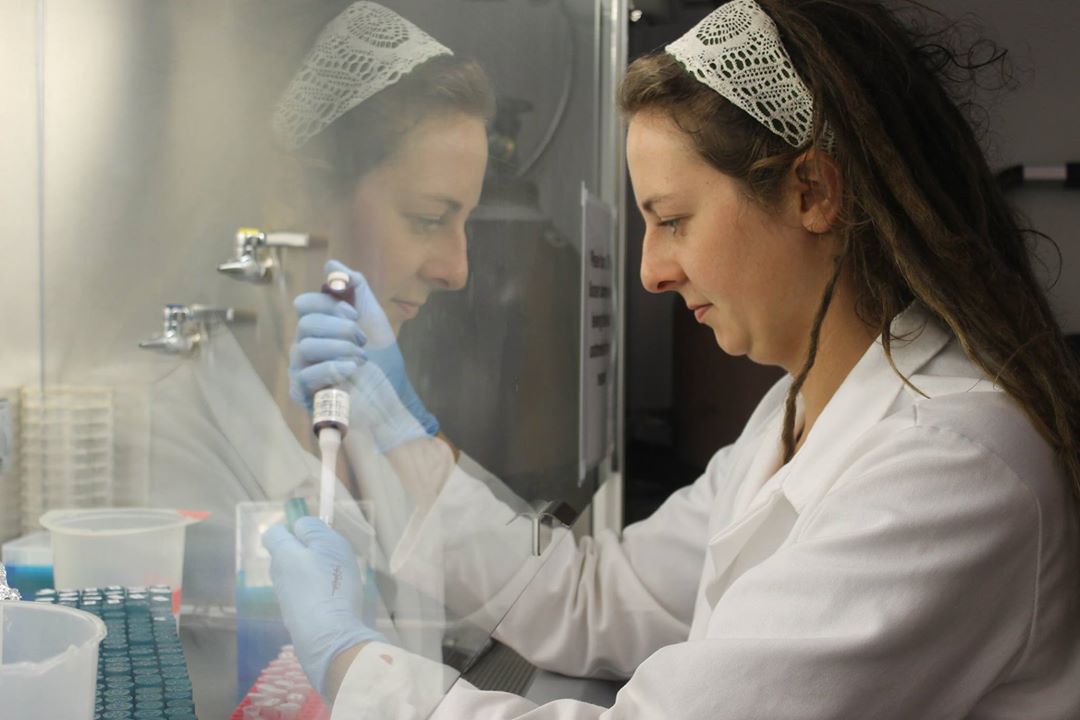Amphibian Skin Microbiomes
See this story on Dr. Harris' and Dr. Rebollar's publication of their lab's work in ISME, the journal of the International Society for Microbial Ecology.
In adult humans, symbiotic microbes outnumber human cells ten to one. The composition of these microbial communities can influence whether individuals are lean or obese and the likelihood that pathogens are able to successfully establish themselves in the body. Amphibians, such as frogs and salamanders, also possess a diverse symbiotic microbiota that live on their skins, and these bacterial symbionts may limit infection by pathogens, such as the fungus Batrachochytrium dendrobatidis (Bd) that has decimated many natural amphibian populations. Bacteria do this by secreting small molecules that kill Bd.

In the Harris lab, we use genomic tools to address questions such as:
1) what is the composition of the skin bacterial community on healthy and infected frogs?
2) what are the microbial genes (metagenomes) present on the skins of healthy and infected frogs?
3) can we use our analysis of bacterial community structure and metagenomics to design effective anti-Bd probiotics? Probiotics are beneficial bacteria that are given to individuals so that they will have improved health. Our goal is to determine which bacteria confer resistance to Bd on resistant individuals and to use this information to make anti-Bd probiotics.
As all animals host symbiotic microbes, these results will have broad applicability to other systems, including humans. There is much interest in human probiotics, and our research into how to design and make successful probiotics will be applied to situations in human medicine, such as how to cure athlete’s foot.
Recent Postdocs and Students
Dr. Eria A. Rebollar
I am currently a postdoctoral research associate in Dr. Reid Harris´s lab. I am working in a multidisciplinary project about the microbial diversity present on the skin of tropical frogs in Panama. I am interested in understanding what factors influence the structure of these communities, and their role in response to the amphibian pathogen Batrachochytrium dendrobatidis (Bd). This fungus has caused dramatic amphibian population declines all over the world. Dr. Harris and colleagues previously identified skin bacterial species that inhibit Bd, and this discovery has initiated a new line of research in order to understand the structure and function of these symbiotic skin microbial communities, as well as the use of bacteria as probiotics for endangered frogs.
I use next generation sequencing technologies, including metagenomics, to characterize the structure and function of these symbiotic skin microbial communities in tropical amphibians.
Kelsey Savage
Kelsey is using next generation sequencing to identify bacteria from the skins of frogs from Madagascar. This country is home to 500 species of frogs found nowhere else in the world and where Bd is mainly absent. She is working with a former master’s student in the Harris lab, Molly Bletz, to determine which bacteria kill Bd. This information will be used to design an effective probiotic to protect the unique and beautiful frogs of Madagascar.
Steve Simonetti
Steve is using next generation sequencing to determine if the addition of a probiotic bacterial species to tadpoles affects the existing bacterial community. An effective probiotic will not cause major changes to the host’s bacteria or will change the community in a way that enhances protection. Steve’s study is one of the few studies in the emerging field of probiotic research to address this important question.
Tiffany Bridges
Tiffany is using next generation sequencing to determine the identity of anti-Bd bacteria from frogs in Panama. The frog communities in many areas of this country have been devastated by Bd, but some species are persisting. Tiffany’s study will help determine whether surviving species have undergone natural selection for anti-Bd bacteria. Knowledge of what bacterial species are selected for can be helpful in designing effective probiotics.


